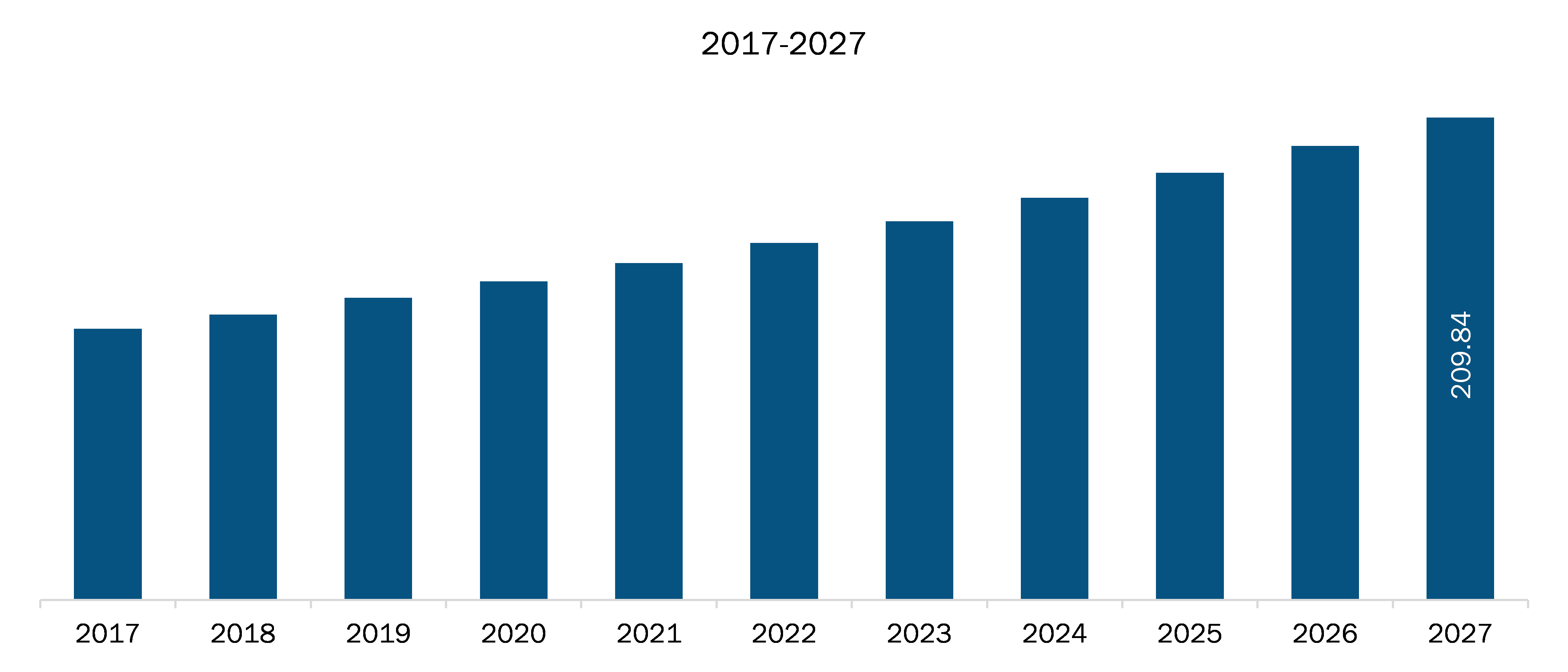The application control market in Asia-Pacific was valued US$ 421.5 million in 2019 and is projected to reach US$ 649.7 million by 2027; it is expected to grow at a CAGR of 5.6% from 2020 to 2027.
The scope of application control across the industries to prevent systems and devices from getting exposed to cyber-attacks is increasing. An application control audit is designed to ensure that the transactions through applications and the data it outputs are secure, accurate, and valid. The application control audit services are gaining high momentum as the applications are becoming the primary target of attack for different malicious activities. These services ensure that the software is free from errors and vulnerabilities that could be exploited by hackers.
The application control market is a highly fragmented and competitive marketplace. The leading companies in this market continue to broaden their clientele by expanding their current offerings. Prominent players face an increasing level of competition, both from start-ups to leading established companies across the world. Several companies in the value chain are acquiring other players in the application control market to provide efficient services to its customers, and thus, to maintain or uplift their position in the market. The application testing services are heavily used for mission-critical operations. The application control audit services are offered as cloud-based testing services, facilitating application control audit, software composition analysis, static analysis testing, and vendor application security testing. Companies such as ISECI International and Veracode provide these services and assist their clients to stick to HIPAA, PCI 6.5, and other compliances as well as to a wide array of other regulatory frameworks, including FISMA, SOX, and NIST 800-53.
The Asia Pacific application control market is expected to grow at a good CAGR during the forecast period. The growing digitization and a large number of players focusing on developing efficient solutions are the major factors supporting the growth of the application control market in this region.

- This FREE sample will include data analysis, ranging from market trends to estimates and forecasts.
Asia Pacific Application control Market–Segmentation
The report segments the Asia Pacific Application control market as follows:
Application control Market – By Component
- Solution
- Services
Application control Market – By Service Component
- Managed Services
- Professional Services
Application control Market – By Access Point
- Desktops/Laptops
- Servers
- Mobiles/Tablets
Application control Market – By Enterprise Size
- Small & Medium Enterprises
- Large Enterprises
Application control Market – By Vertical
- Government and Defense
- BFSI
- IT and Telecom
- Healthcare
- Retail
Application control Market- By Country
-
Asia Pacific
- Australia
- China
- Japan
- India
- South Korea
- Rest of Asia Pacific
Asia Pacific Application control Market-Companies Mentioned
- Broadcom, Inc
- McAfee, LLC,
- Ivanti
- VMware, Inc.
- Trend Micro Incorporated
- Check Point Software Technologies Ltd.
- Cambium Networks
Asia Pacific Application Control Report Scope
| Report Attribute | Details |
|---|---|
| Market size in 2019 | US$ 421.5 Million |
| Market Size by 2027 | US$ 649.7 Million |
| CAGR (2020 - 2027) | 5.6% |
| Historical Data | 2017-2018 |
| Forecast period | 2020-2027 |
| Segments Covered |
By Component
|
| Regions and Countries Covered |
Asia-Pacific
|
| Market leaders and key company profiles |
|
- Historical Analysis (2 Years), Base Year, Forecast (7 Years) with CAGR
- PEST and SWOT Analysis
- Market Size Value / Volume - Regional, Country
- Industry and Competitive Landscape
- Excel Dataset
Recent Reports
Testimonials
Reason to Buy
- Informed Decision-Making
- Understanding Market Dynamics
- Competitive Analysis
- Identifying Emerging Markets
- Customer Insights
- Market Forecasts
- Risk Mitigation
- Boosting Operational Efficiency
- Strategic Planning
- Investment Justification
- Tracking Industry Innovations
- Aligning with Regulatory Trends






















 Get Free Sample For
Get Free Sample For